Revitalizing Philippines’ champions of responsible brand building
PANA welcomes new members, inducts officers for 2024
By Jomarc Angelo M. Corpuz
The Philippine Association of National Advertisers (PANA) kicked off 2024 by adding two members and installing the association’s new board of directors and trustees during their Induction Ceremony and General Membership Meeting, graced by a full house of brand builders and industry partners, last Jan. 25 at the Ascott Hotel in Makati City.

PANA Director Bea Atienza of Colgate-Palmolive Phils. inducted the new PANA members, representing Easytrip Services Corp. and Medimarketing, Inc., into the association; while The Philippine STAR Chief Executive Officer Miguel G. Belmonte, who also served as the keynote speaker of the event, sworn PANA’s new officers into their roles.
Shining through amid changing times
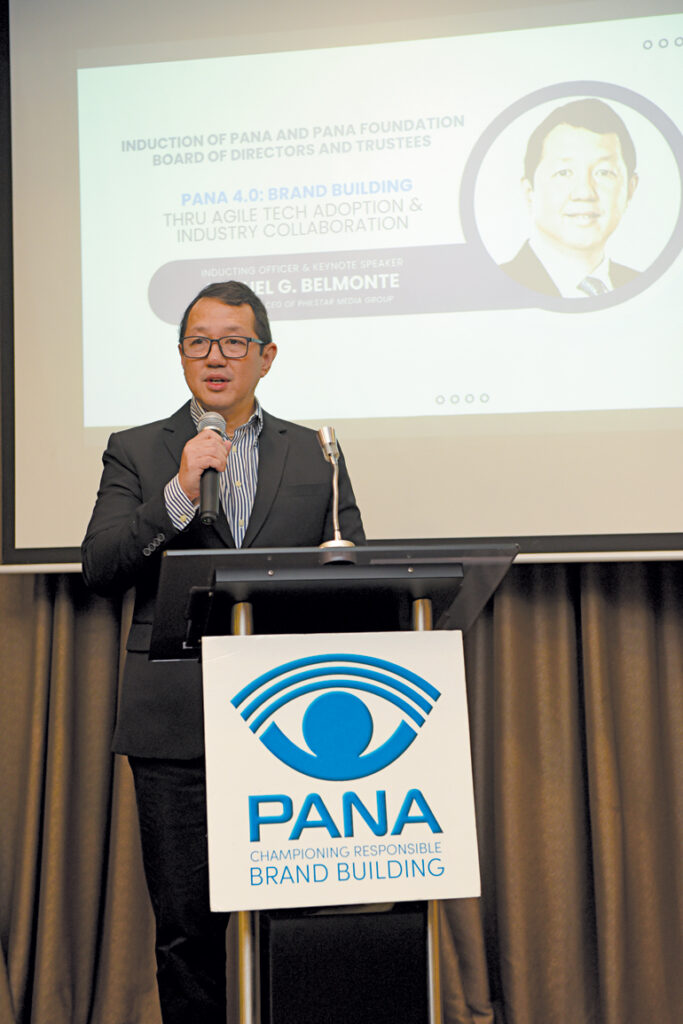
During his keynote speech at the event, Mr. Belmonte stressed the importance of resilience and coping with change while inspiring the audience with his achievements and pop references.
He noted the difficulty of reading and anticipating new trends, as well as the constant need to acquire new skills only for those skills to be rendered obsolete quickly.
“You know it’s not the same as it was,” he said, borrowing a line from the song “As It Was” by Harry Styles.
To emphasize how he dealt with the challenges, Mr. Belmonte mentioned The Philippine STAR’s achievements in the past year including winning Best Newspaper of 2023 from the Manila Overseas Press Club, becoming a full-blown media company as the PhilSTAR Media Group, and moving into their new office in Parañaque City.
He continued his message by revealing that PANA’s president this year, Mick Atienza of Smart Communications, Inc., was a former employee of The Philippine STAR.
“[Mr. Atienza] is a full-blooded former Philippine Star [employee]. We have no doubt that he will forge new roads ahead for the association along with fellow officers and directors. We are proud of you, Mick,” Mr. Belmonte said.
He capped off his message by quoting another pop reference in Coldplay’s “Yellow,” inspiring brand builders by saying, “Look at the stars, look how they shine for you.”
Keeping PANA’s core in a transforming industry
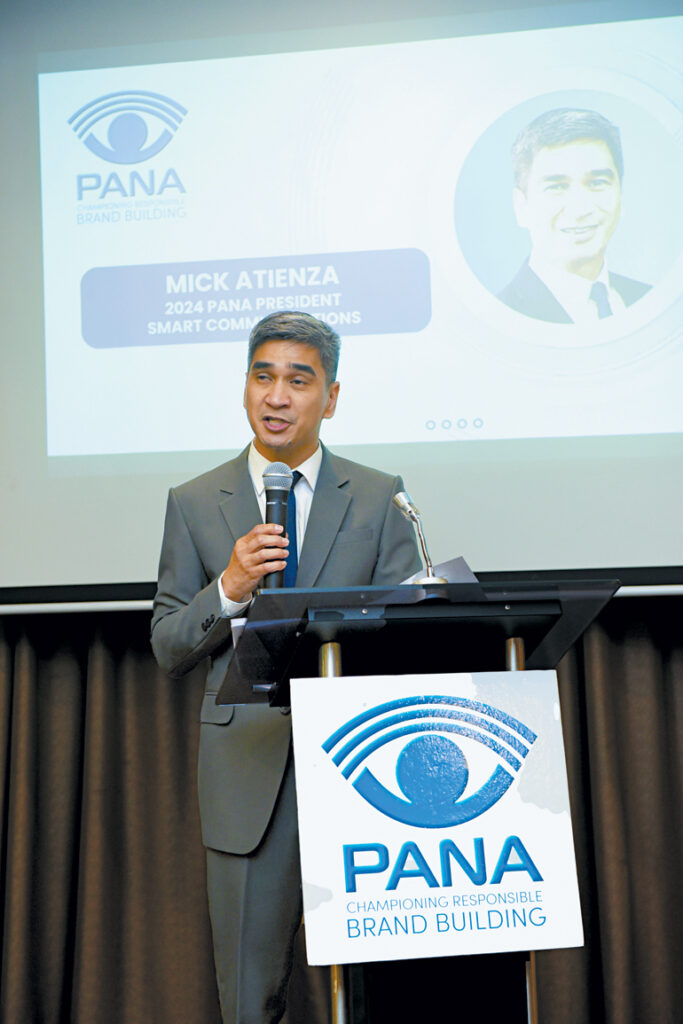
Mr. Atienza, now inducted as PANA’s president, delivered a speech about how he first encountered PANA and his objectives for 2024 as he assumes his new role.
Mr. Atienza, who is the assistant vice-president for Consumer WiFi and Mobile Advertising at Smart Communications was first introduced to PANA when he worked as a fresh graduate in the corporate communications department of The Philippine Star. Still unaware of the association, the former junior layout artist quickly realized the significance of the organization.
“Back then I did not know much about PANA. I just remember coordinating sponsorship requirements for The STAR and I thought of it as a very important industry organization because we often get proposals for sponsorship from PANA and we would always say yes,” Mr. Atienza said during his speech.
The PANA president also shared that he saw how the industry evolved, witnessed how PANA navigated through different changes, and watched how the association advocated for truth in advertising and championing responsible brand building. He noted as well how PANA’s north star has always been to keep the welfare of consumers in mind.
In the era of customization and personalization, Mr. Atienza will be pushing for three objectives as PANA aims to keep up with the industry while trying to stick to its core values: being collaborative, adaptive, and responsive.

On being collaborative, PANA in 2024 not only hopes to strengthen their relationship with industry partners but also to build more meaningful connections not just with other organizations in the industry but also within PANA and the PANA Foundation.
PANA will also keep tabs on experts of the latest tools and marketing trends like artificial intelligence (AI) and machine learning. Mr. Atienza aims to extract knowledge from AI specialists for a more adaptive association.
Finally, the newly inducted president will also push for a PANA that can be relied on when tackling and addressing issues. He hopes for a PANA that listens to questions and assists in settling disputes regarding policies affecting the industry.
Mr. Atienza ended his speech by thanking the PANA Board, who “voluntold” (volunteered by telling) him to become this year’s president; his predecessor Ms. Hernandez; and the PANA Secretariat. He also expressed his gratitude to Mr. Belmonte, along with his past mentors in The Philippine Star, namely Executive Vice-President Lucien Dy Tioco, Vice-President for Operations Tammy Mendoza, and Vice-President for Sales and Marketing Jay Sarmiento.
“Yung junior layout artist niyo dati, PANA President na ngayon,” Mr. Atienza said to his colleagues from the newspaper. (Your junior layout artist before has now become a PANA President.)
Empowering more future marketers
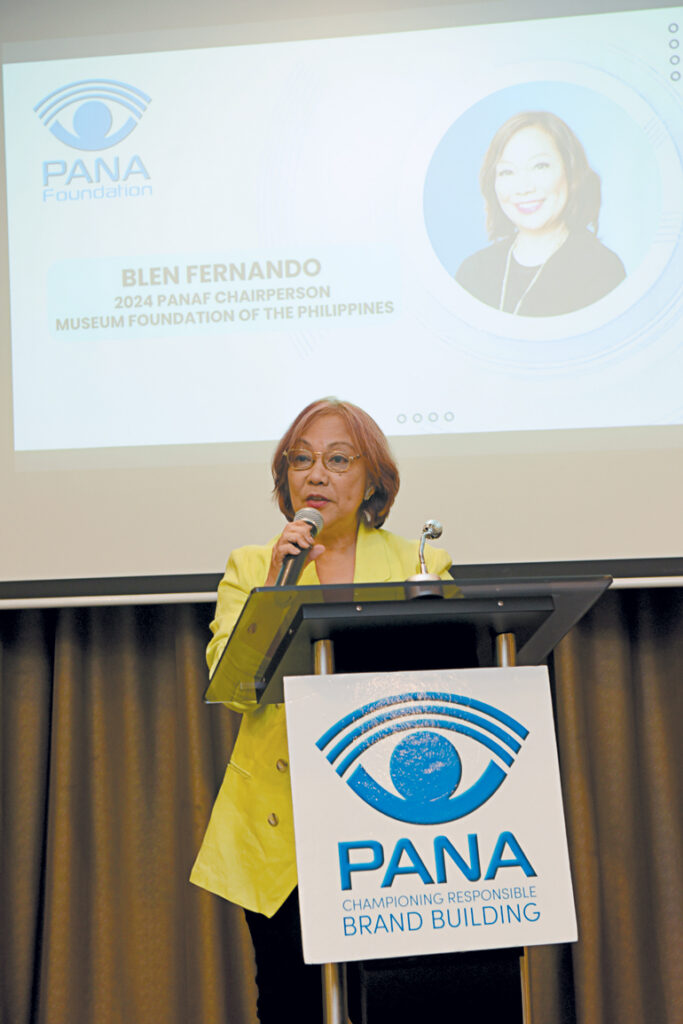
To cap off the induction ceremony, PANA Foundation (PANAF) Chairperson Blen Fernando shared the “heart” of PANAF’s core programs for 2024 and invited the association’s members to collaborate with them in the implementation of their corporate social responsibility projects.
Having already helped about 50,000 students from about 100 colleges and universities in the Philippines, the foundation aims to assist more through three core programs this year.
The first of these is the “Youth Creativity Festival,” which aims to mould a generation of responsible content creators and audiences in this digital age. At last year’s festival, views-on-demand peaked at more than 17,000 while live attendance averaged close to 500 students. The youth congress uses contemporary formats and technology such as gaming, polls, Q&As, and videos, to engage participants.
The PANAnaw Brand Communications Students’ Competition, meanwhile, challenges school teams to develop and defend a marketing plan for a case study on a social development goal. In fact, several winning campaigns have already been adopted by the government in the areas of road safety, tourism, and disaster management.
Lastly, The PANAF Educational RoadTRIP is an outreach program whose objective is to bring content and marketing enrichment sessions to colleges and universities outside the National Capital Region. This year the road trip is getting ready to roll out to De La Salle Lipa in February and the Tarlac State University in April.

“As Trustees, we embrace a heart-centered approach to leadership — not just the mind — to make us more equipped to connect, understand, and support the next generation of marketing practitioners, helping them develop into competent and responsible marketers,” Ms. Fernando said as she encouraged fellow PANA members to contribute to the foundation.
New officers
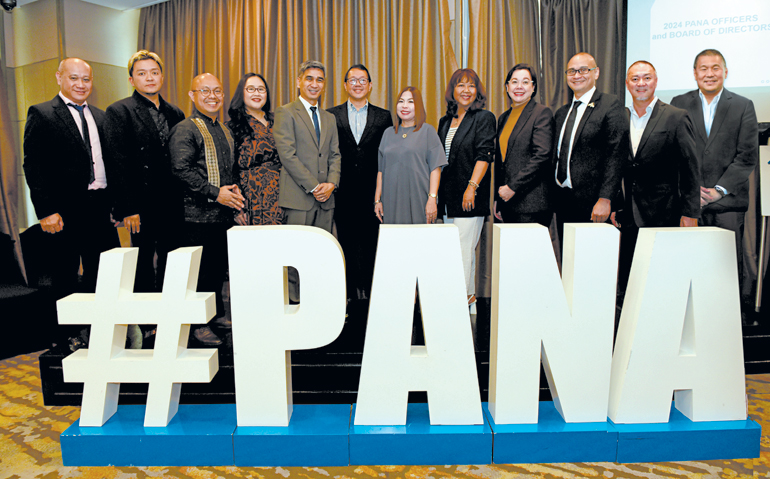
Aside from Mr. Atienza, the newly inducted officers of the PANA Board include the following: Christine Roa (Ayala Land Inc.) as vice-president; Rey Marc San Juan (Julie’s) as secretary; Catherine Santamaria (Bank of the Philippine Islands) as treasurer; Ronald Molina (Ginebra San Miguel) as auditor; Monday Gonzalez (Globe Group) as public relations officer; and directors Bea Atienza (Colgate-Palmolive Philippines), Ken Lerona (Home Credit), Emmanuel Ordinanza (Nestle Philippines), Garry Pactao (Philippine Seven Corp.), and JonJon San Agustin (SM Supermalls).
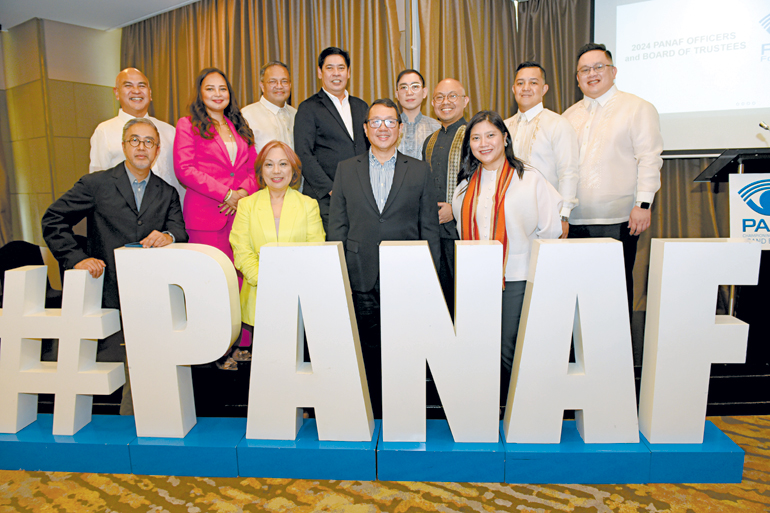
Meanwhile, PANAF’s officers this year are as follows: Blen Fernando (Museum Foundation of the Philippines, Inc.) as chair; Maye Yao Co Say (Richwell Phils. Inc.) as vice-chair; Eric Samuel Joven (Beauty Profile Corp.) as secretary; Alan Fontanilla (Packworks) as treasurer; and trustees Andrew Ahorro (Kolin Phils. Int’l., Inc.), Gigi Tibi (RadManila Communications Inc.), Wendell Kristian Labre (Bayad), Ken Lerona (Home Credit), Miguel Angelo Villa-Real (Philippine Veterans Bank), Victor Janolino (Rebisco), and Aji Santiago (Moldex Realty).
 PANA, established in 1958, is one of the pioneer and distinguished organizations in the country comprising close to 300 members from various multinational and local companies engaged in advertising and brand building. To know more about PANA, visit www.pana.com.ph.
PANA, established in 1958, is one of the pioneer and distinguished organizations in the country comprising close to 300 members from various multinational and local companies engaged in advertising and brand building. To know more about PANA, visit www.pana.com.ph.


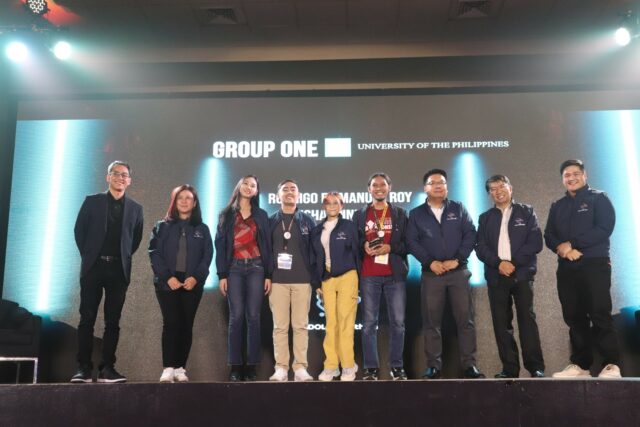


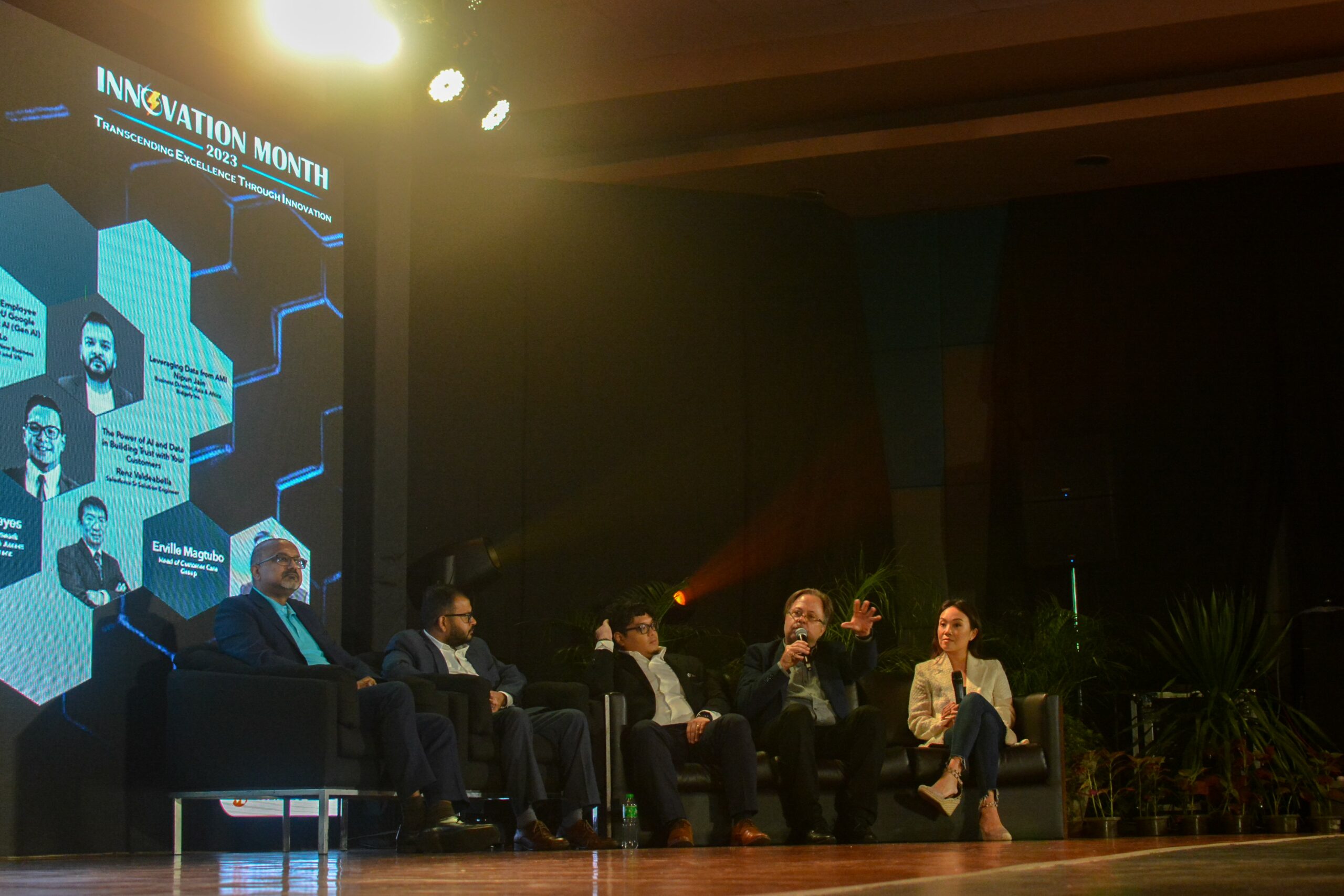


![solar-panel-generates-green-electricity_661209-25 [freepik]](https://www.bworldonline.com/wp-content/uploads/2024/02/solar-panel-generates-green-electricity_661209-25-freepik-640x489.jpeg)






